Article describes automatic venipuncture device and control system
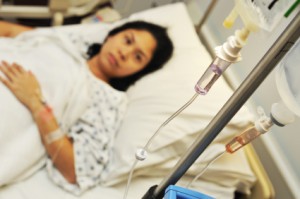
This device adopts ultrasonic image guided by the microcontroller, to achieve automatic venous catheterization” Huo et al (2017). Abstract: According to clinical PICC (Peripherally Inserted Central Catheter) catheter surgery, this project introduces a new scheme for vein puncturing device and its controlling system. This device adopts ultrasonic image guided by the microcontroller, to achieve automatic […]
Sedation decision aid in ambulatory venous access device placement

This study was undertaken to determine the influence of using a sedation decision aid when selecting a sedation option for totally implantable vascular access device placement on patient choice, workup, and recovery time” Chittle et al (2018). Abstract: This study was undertaken to determine the influence of using a sedation decision aid when selecting a […]
Factors that affect the reporting of sharps injuries at a large academic teaching hospital

The purpose of this study was to examine the incidence, attitudes, and factors that affect the reporting of sharps injuries among orthopedic surgery residents at a large academic teaching hospital in an effort to increase reporting rates and design effective interventions” Manoli et al (2018). Abstract: Sharps-related injuries represent a significant occupational hazard to orthopedic […]
Hepatitis B and C seroprevalence among medicine students in Northeast Ethiopia

The aim of this study was to determine the seroprevalence of hepatitis B and C virus infections among medicine and health science students in Northeast Ethiopia and to assess their knowledge and practice towards the occupational risk of viral hepatitis” Demsiss et al (2018). Abstract: BACKGROUND: Health care professionals, especially medical students, are at greater […]
Vascular access practice guidelines of the European Society for Vascular Surgery

The goal of these Guidelines is to summarise and evaluate all the currently available evidence to assist physicians in selecting the best management strategies for all patients needing VA or for pathologies derived from a VA” Schmidli et al (2018). Extract: “The European Society for Vascular Surgery (ESVS), in line with its mission, appointed the […]
Planning and evaluation for dialysis vascular access in the elderly

This article reviews access considerations for AVF placement in the elderly population and considers the possibility that the fistula first approach to vascular access should not be an absolute” Halinski and Koncicki (2018). Abstract: Vascular access is of vital importance for patients requiring dialysis therapies. AV fistulas have been endorsed by many professional societies as […]
Incidence of PICC associated DVT is 5.6% in this study

PICC-VTE is a common complication in NPC patients, with an incidence of 5.6% in our analysis” Liang et al (2018). Abstract: BACKGROUND: Despite wide usage, peripherally inserted central catheter (PICC)-related venous thromboembolism (VTE) is common in nasopharyngeal carcinoma (NPC) patients. PATIENTS AND METHODS: This was a retrospective cohort study of NPC patients with PICC insertions […]
Thrombophlebitis after administration of flucloxacillin via a peripheral IV

Flucloxacillin exerts antibacterial activity by binding to and inactivating penicillin-binding proteins present on the inner membrane of the bacterial cell wall” O’Connor et al (2018). Abstract: Flucloxacillin is a narrow spectrum beta-lactam antibiotic of the penicillin class. Flucloxacillin exerts antibacterial activity by binding to and inactivating penicillin-binding proteins present on the inner membrane of the […]
Worldwide study of peripheral intravenous catheters

In this study, we found that many PIVCs were placed in areas of flexion, were symptomatic or idle, had suboptimal dressings, or lacked adequate documentation. This suggests inconsistency between recommended management guidelines for PIVCs and current practice” Alexandrou et al (2018). Abstract: BACKGROUND: Peripheral intravenous catheter (PIVC) use in health care is common worldwide. Failure […]
Patient outcomes on long-term home parenteral nutrition
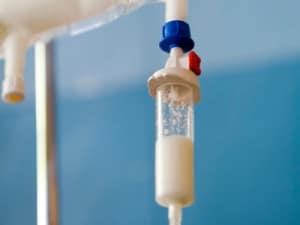
We performed this study to examine and understand the evolving demographics and changing outcomes of intestinal failure, and its implications for healthcare delivery” Brown et al (2018). Abstract: AIM: We performed this study to examine and understand the evolving demographics and changing outcomes of intestinal failure, and its implications for healthcare delivery. METHOD: We conducted […]
Literature review of antimicrobial resistance in CRBSI

Catheter-related or central line-associated bloodstream infections (CRBSIs/CLABSIs) are among the most common complications of central vascular catheterization and are associated with a high economic burden” Gala et al (2018). Background: Catheter-related or central line-associated bloodstream infections (CRBSIs/CLABSIs) are among the most common complications of central vascular catheterization and are associated with a high economic burden. […]
Upper-extremity deep vein thrombosis in patients with breast cancer

The objective of this study was to assess the incidence of upper-extremity deep vein thrombosis (UEDVT) in patients with breast cancer to determine whether the risk of UEDVT was higher with chest versus arm ports, as well as to determine the importance of previously reported risk factors predisposing to UEDVT in the setting of active […]
Bloodstream infection and occlusion of central venous catheters in children
One in ten children with a central venous catheter (CVC) develops a central line-associated bloodstream infection (CLABSI)…” Rickard and Ullman (2018). Abstract: One in ten children with a central venous catheter (CVC) develops a central line-associated bloodstream infection (CLABSI),1 which is a life-threatening complication and harmful distraction from time-sensitive treatment. However, across CVC types (figure), […]
Pressure injuries secondary to limb splinting for intravascular access
This review aims to present a case series on pressure injury (PI) formation secondary to limb-splinting for preservation of peripheral intravascular catheter (PIVC) access in neonatal and pediatric patients” Sweeney et al (2018). Abstract: Aim: This review aims to present a case series on pressure injury (PI) formation secondary to limb-splinting for preservation of peripheral […]
Increased demand for PICCs directly linked to outpatient intravenous antibiotic services

The clear increase in demand for PICCs in our institution is directly linked to the advent of outpatient intravenous antibiotic services. In this paper, we assess the impact that the use of PICCs combined with intravenous outpatient treatment may have on cost and hospital bed demand” O’Brien et al (2018). Abstract: Peripheral inserted central catheters […]
Introducing a checklist to reduce central venous line associated bloodstream infections

The introduction of a checklist to improve the adherence to hygiene standards while placement of central venous lines reduced the frequency of infections significantly” Wichmann et al (2018). Abstract: BACKGROUND: Central line-associated bloodstream infections (CLABSI) are a major source of sepsis in modern intensive care medicine. Some years ago bundle interventions have been introduced to […]
Review of acute management of intravenous extravasation injuries

The goal of this article was to provide plastic surgeons and health care providers with a general overview of the acute management of intravenous infiltration and extravasation injuries” Maly et al (2018). Abstract: Intravenous therapy is a common practice among many specialties. Intravenous therapy extravasation is a potential complication to such therapy. Hospitals without a […]
Ultrasound guidance in a simulated central venous line procedure

It is therefore necessary to develop reliable quantitative metrics to establish standards for the attainment and maintenance of competence. This work identifies such a metric for simulated central line procedures” Ameri et al (2018). Abstract: Complications in ultrasound-guided central line insertions are associated with the expertise level of the operator. However, a lack of standards […]
Comparison of the performance of battery-operated IV fluid warmers

We compared the warming properties and resistance to flow of currently available battery-operated fluid warmers” Lehavi et al (2018). Abstract: OBJECTIVES: Warming intravenous fluids is essential to prevent hypothermia in patients with trauma, especially when large volumes are administered. Prehospital and transport settings require fluid warmers to be small, energy efficient and independent of external […]
Strategies for managing smart infusion pump alarm and alert fatigue
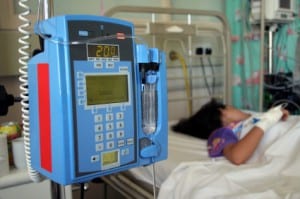
“Although smart infusion pumps are intended to prevent medication errors by alerting users about doses that exceed set thresholds, a large number of clinically insignificant alarms and alerts create the potential for alert and alarm fatigue” Shah et al (2018).
How to manage smart-infusion pump drug libraries

Through implementation of a standardized, consensus-driven process for smart-pump drug library optimization, ICPS member health systems reduced clinically insignificant smart-pump alerts” Walroth et al (2018). Abstract: PURPOSE: Development and implementation of an interprofessional consensus-driven process for review and optimization of smart-pump drug libraries and dosing limits are described. SUMMARY: The Indianapolis Coalition for Patient Safety […]
Efficacy and safety of a novel skin cleansing formulation versus chlorhexidine gluconate

The colloidal silver-based product was noninferior to the 4% CHG product at 10 minutes and 6 hours postapplication” Paulson et al (2018). Reference: Background: This study evaluated whether a multi-ingredient surfactant colloidal silver technology was noninferior to a 4% chlorhexidine gluconate (CHG) antiseptic on immediate and persistent antimicrobial activity. Methods: The inguinal regions of 81 […]
Adoption of principal guidelines and international recommendations on vascular access

There is a wide variety of options available for venous access. Device selection for venous access must be adapted to the patient’s needs, and to the type, duration and frequency of the infusion” Spina et al (2018). Abstract: Vascular access is the commonest invasive procedure in secondary care. Vascular access is understood as being access […]
What is the drying time of needleless IV connectors?

Needleless connector drying times after a 15-second scrub with isopropyl-alcohol, isopropyl-alcohol/chlorhexidine, or povidone-iodine varied from 5 seconds to >6 minutes” Slater et al (2018). Reference: Allowing needleless connectors (NCs) on vascular catheters adequate drying time after cleaning with antiseptic is essential. Drying time instructions on antiseptic pads/wipes relate to skin use, not inanimate objects. Needleless […]
What is the impact of reconstituting IV medication with 0.9% sodium chloride injection

In conclusion, 0.9% sodium chloride injection may be considered for reconstituting medications for peripheral IVP administration if the final osmolarity is deemed reasonable” Gandhi et al (2018). Extract: “In conclusion, 0.9% sodium chloride injection may be considered for reconstituting medications for peripheral IVP administration if the final osmolarity is deemed reasonable. Alternative administration techniques should […]
Antibiotic-free vascular catheter lock solution formed from gas plasma-activated disinfectant
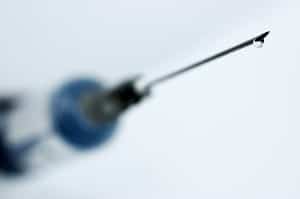
We investigated the efficacy and safety of a novel antibiotic-free lock solution formed from gas plasma-activated disinfectant (PAD)” Bhatt et al (2018). Abstract: Antimicrobial lock solutions are important for prevention of microbial colonization and infection of long-term central venous catheters. We investigated the efficacy and safety of a novel antibiotic-free lock solution formed from gas […]
An unusual case of stuck guide wire during central venous catheter placement
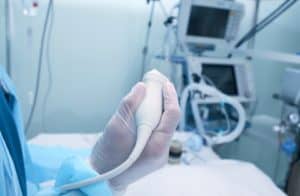
This problem was solved by simultaneous withdrawal of guidewire along with the needle, and on examination we found soft tissue debris lodged within the lumen which was preventing the guidewire movement in both directions. So, it is suggested that guidewire should be removed along with needle as a single unit if it is required” Kumar […]
Central Venous Catheter-directed tPA treats pulmonary embolism

We describe the approach of a tPA bolus directed through a central venous catheter, resulting in return of spontaneous circulation and immediate improvement in physiologic parameters prior to confirmation of PE with computed tomography angiogram” Gulati and Brazg (2018). Abstract: We present the case of an 88-year-old female who presented to the emergency department (ED) […]
What is the effect of ipsilateral tilt position on right subclavian vein catheterization
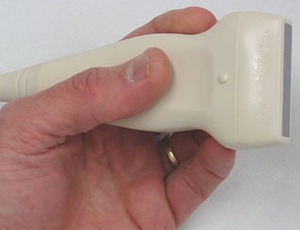
This is the first trial to investigate the effects of the ipsilateral tilt position on right SCV catheterization” Jung et al (2018). Abstract: BACKGROUND: The cross-sectional area of the subclavian vein (csSCV) is an important factor determining the success rate of SCV catheterization. The head-down position increases the csSCV. However, the effects of lateral tilting […]
Implementation of the non-physician provider as an alternative ICU staffing model
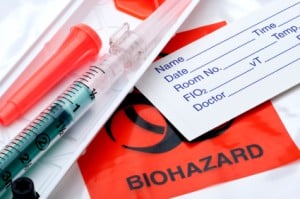
The aim of this study is to provide insight on how a Dutch ICU implemented non-physician providers (NPP), besides residents, and what this staffing model adds to the care on the ICU” Kreeftenberg et al (2018). Abstract: INTRODUCTION: Literature in Europe regarding implementation of nurse practitioners or physician assistants in the intensive care unit (ICU) […]

